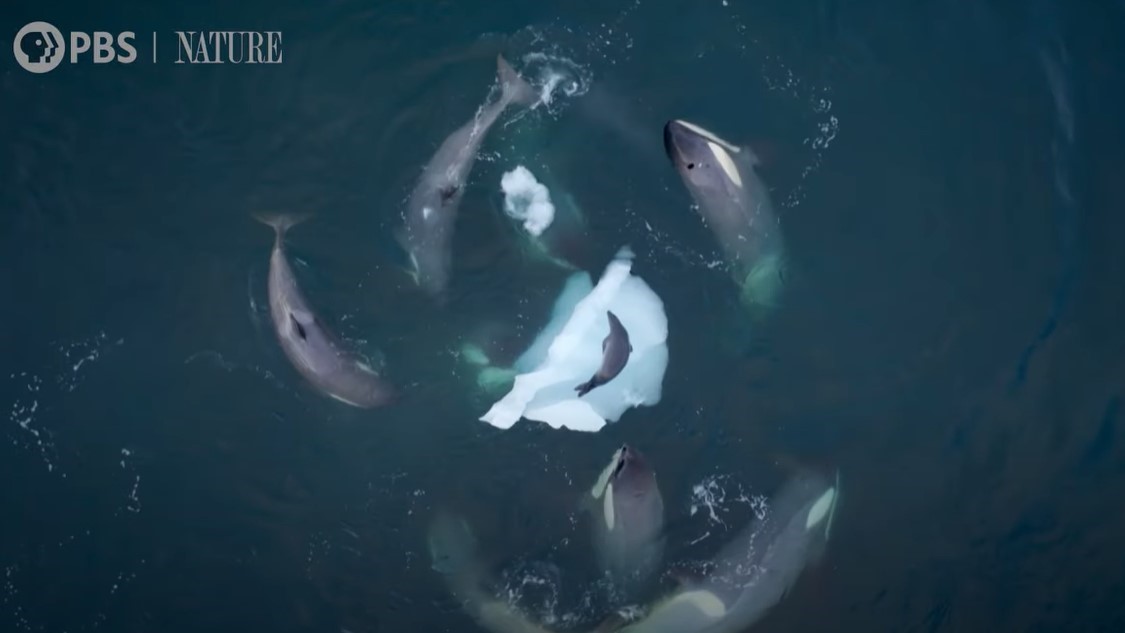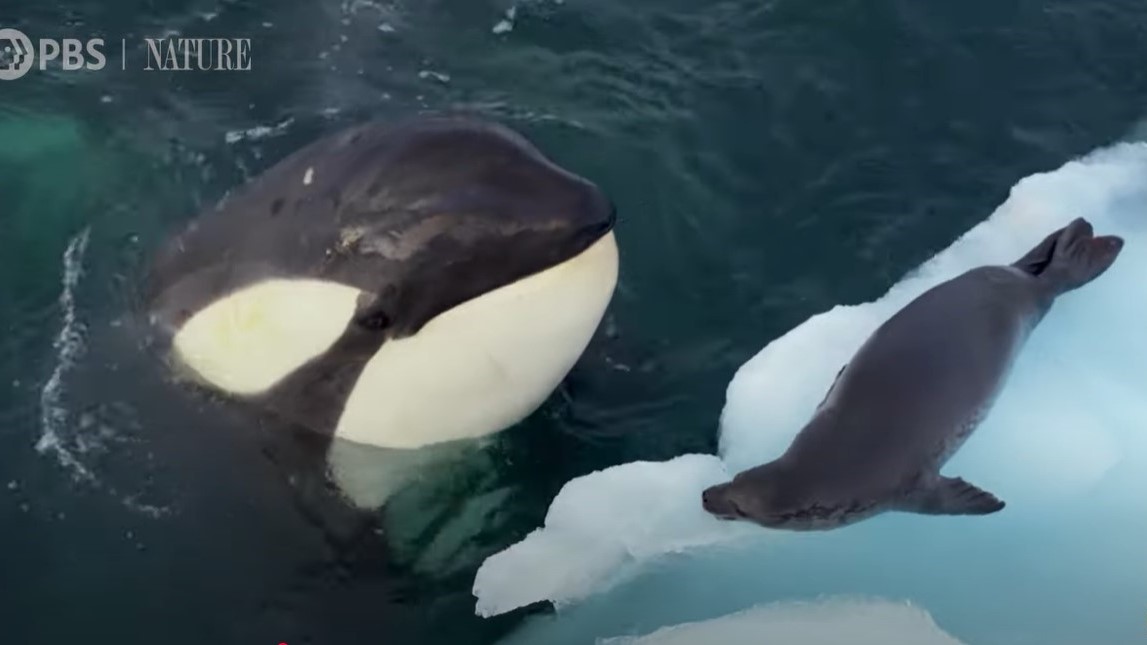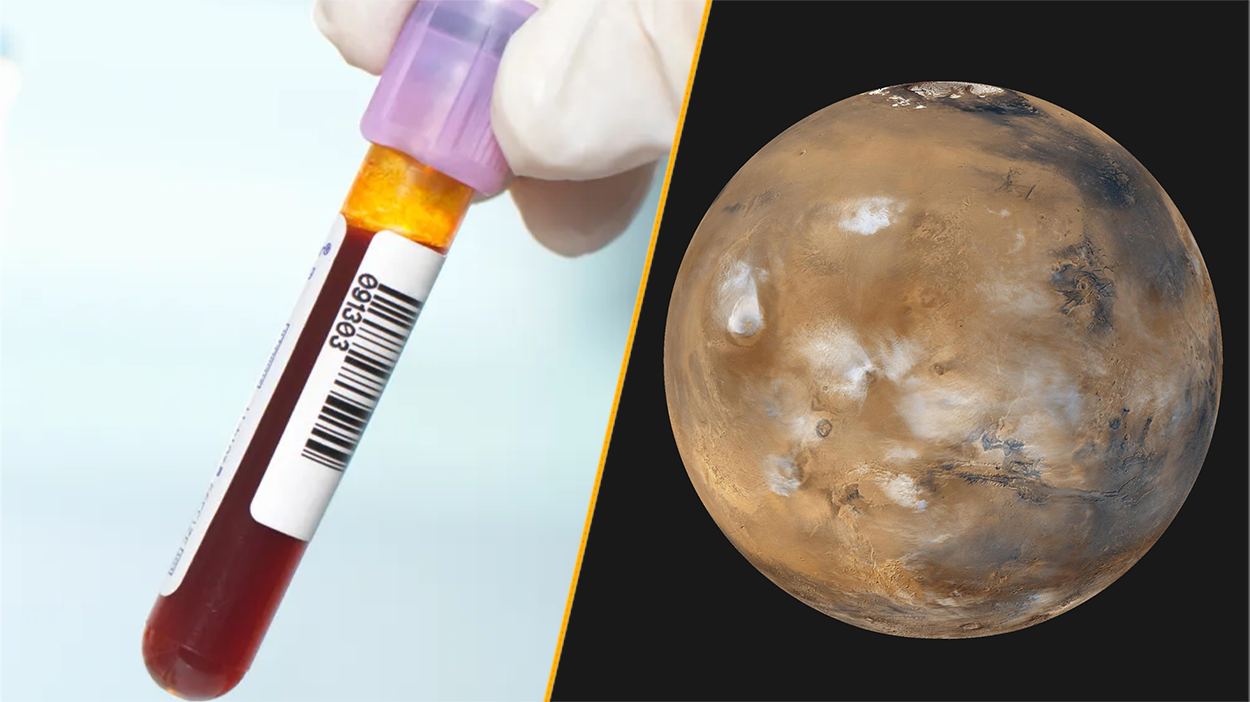Orcas off Antarctica filmed teaching calves to hunt in incredible new footage
PBS show "Nature: Expedition Killer Whale" reveals an hour-long lesson where adult orca teach calves how to hunt seals off Antarctica.
Stunning new footage captures the moment adult orcas carefully teach their calves how to hunt, demonstrating how to push a seal off a bit of ice before getting the young to give it a go themselves.
The clip shows a group of seven orcas — four adults and three calves — as they circle a seal on a tiny chunk of ice in western Antarctica’s Marguerite Bay. The lesson, which lasted over an hour, was filmed for the new PBS show "Nature: Expedition Killer Whale," which follows a remarkable group of pack ice orcas (Orcinus orca) that live off the coast of Antarctica.
"The biggest surprise was the careful, measured way in which the females kept the seal corralled close to the piece of ice without fatally injuring it, so that it would climb back out onto the ice," Leigh Hickmott, a whale biologist and science advisor for the show, who observed the encounter from a boat nearby, told Live Science in an email.
"This allowed the females to show the calves a number of different approaches to gain access to the seal, all in one teaching session," he said. The hunting techniques they taught the calves included "wave washing, tipping the ice, bubble blowing to flush the seal from under the ice and taking hold of the seal by its hind flippers to prevent injury from its teeth."
Related: Boat-ramming orcas may be using yachts as target practice toys, scientists suggest
In the footage, a female orca leads the lesson, demonstrating how to pull the seal off the ice by its tail, as the calves watch and learn. She lets the seal escape, and after it jumps back on the ice, the calves take turns practicing the technique — a behavior that's repeated over and over.
Orcas are highly intelligent apex predators. They are social, living in family pods, and hunt in packs. They're among the few species known to actively teach their young (and one another) different skills, which can result in innovative new behaviors.
Get the world’s most fascinating discoveries delivered straight to your inbox.

The orcas observed in the clip, known as type B1 orcas, are known for their "wave-washing" hunting technique, where the pod works together to create large waves that knock seals from the safety of ice floes into the water.
The PBS show also reveals the first recordings of these orcas' calls to each other as they search for prey, coordinate hunts and share their catch.

Hickmott said the teaching sequence highlights the cultural transmission of knowledge between orcas and shows their ability to solve complex problems through teamwork.
"Remembering past experiences and honing techniques builds their effectiveness as predators and that by regularly allowing young inquisitive calves to participate in order to learn, they strengthen the pod's future capabilities and likelihood of survival," he said.
"Nature: Expedition Killer Whale" premieres on Wednesday, Feb. 12 at 8/7c.
► How to watch 'Expedition Killer Whale' — TV and streaming details for orca documentary
Orca quiz: Will you sink or swim?

Hannah Osborne is the planet Earth and animals editor at Live Science. Prior to Live Science, she worked for several years at Newsweek as the science editor. Before this she was science editor at International Business Times U.K. Hannah holds a master's in journalism from Goldsmith's, University of London.
You must confirm your public display name before commenting
Please logout and then login again, you will then be prompted to enter your display name.

